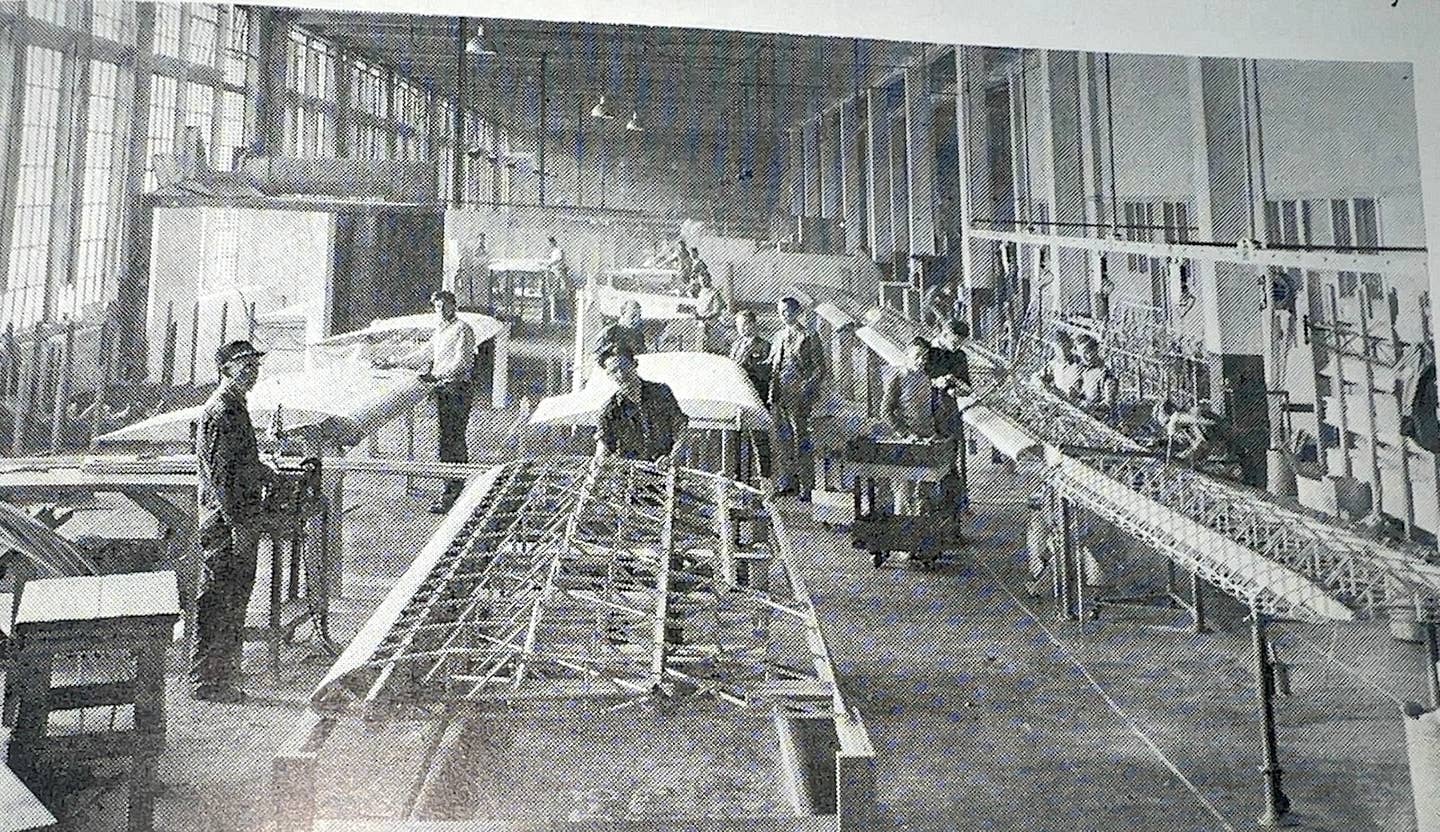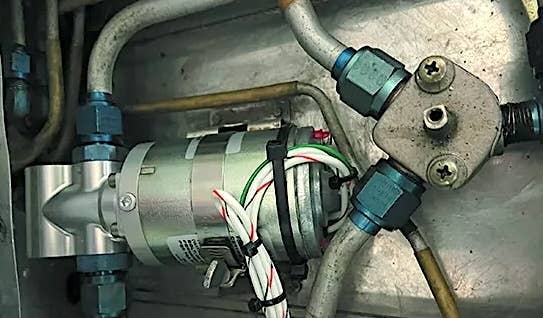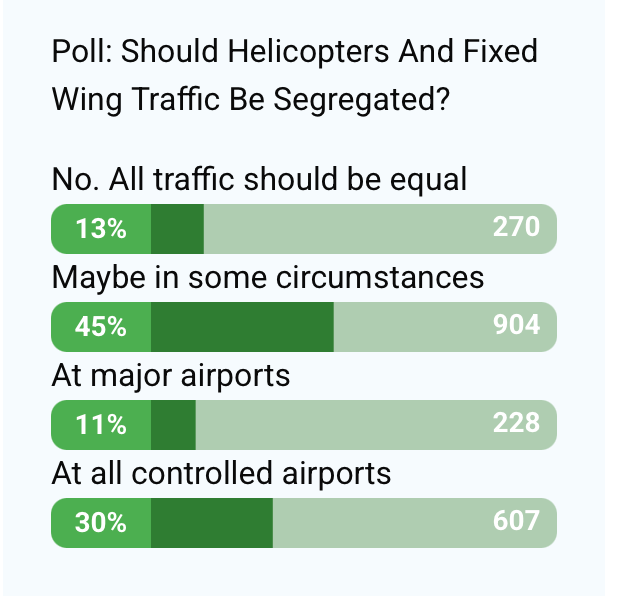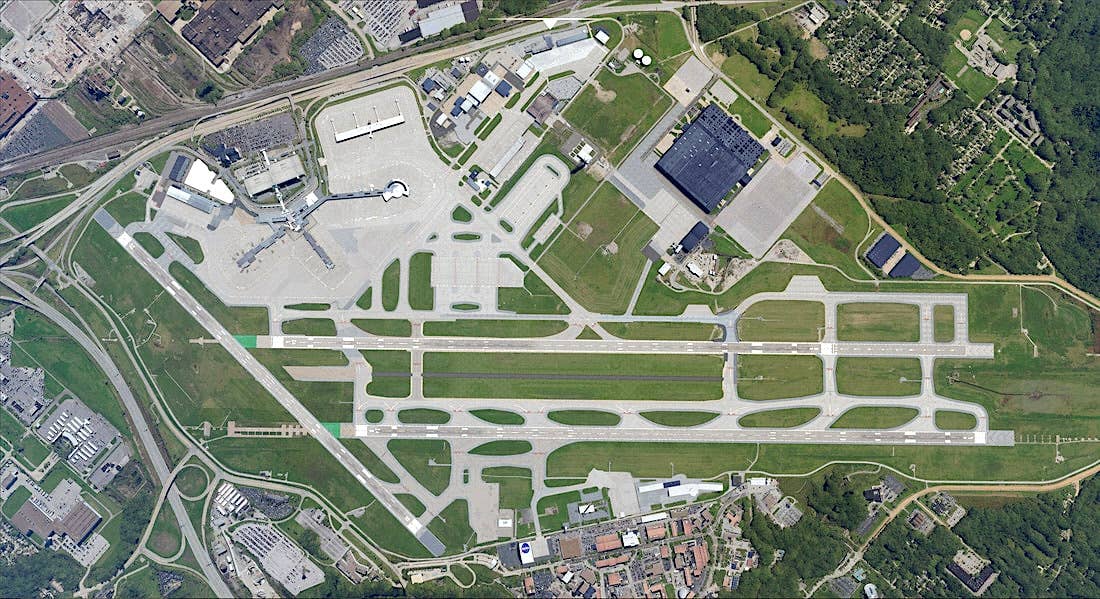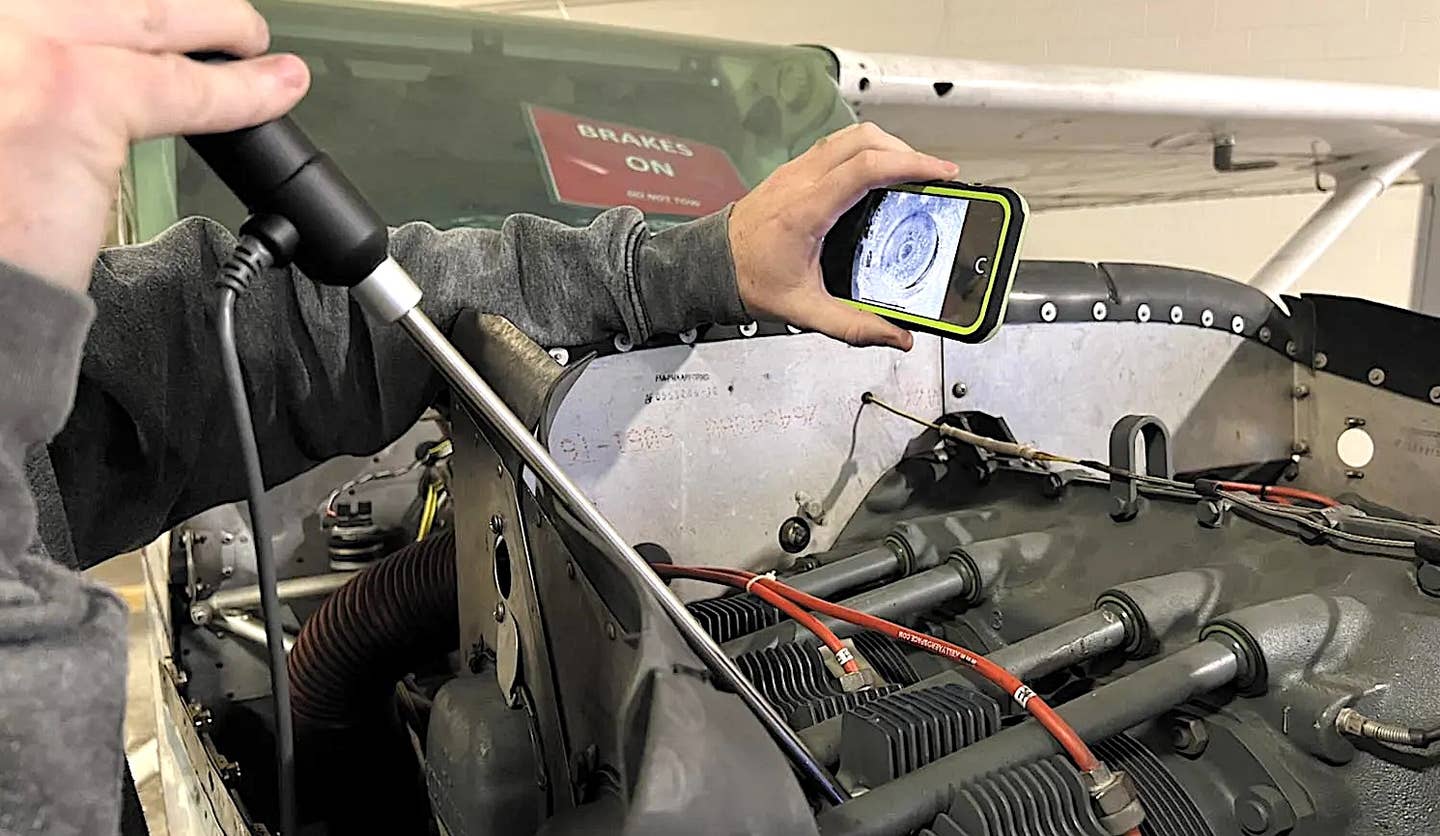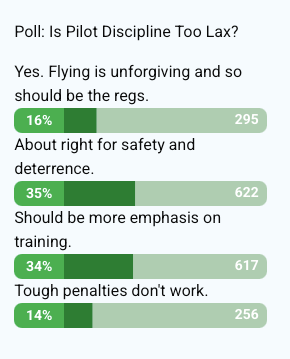Pelican’s Perch #85: Where Are The Eyes? — Part 1
As AVweb readers know, John Deakin loves to get precision out of his airplane using instruments. But not when VFR near an airport.
On one of the mail lists I frequent, a newcomer wondered why people bothered to look outside on takeoff, and stated that he was deliberately "eyes inside," focused on the instruments from liftoff to 1,000 AGL.Well!He got well and truly (but nicely) roasted, and a very lively discussion followed. In trying to quantify things, the list seemed to settle on "95 percent and 5 percent." The "inside" fellow felt 95 percent of his attention was properly "inside," while most of the rest of us felt 5 percent was more appropriate, citing the usual "birds, ultralights, other traffic, etc." Some of it caused me to look rather hard at my own operations, and I realized (as did many) that it's not quite so simple; and the old platitudes, while mostly true, don't necessarily cover all situations.Just where are your eyes? Yeah, I know, in your head. But precisely where are they looking, and when? What are you looking for? Does your scan change from airplane to airplane? Do you fly just one airplane all the time, or two, or many? Is there a difference between a Piper Cub and a Boeing 747? I think there is, and I'd like to tell you why.
Start Simple
300
Take the Piper Cub, that lovely, old, classic, tailwheel aircraft. The student sits in the back seat, for that is also where he will sit during solo flight, due to the position of the center of gravity (CG).Even a small instructor in the front seat will block all view of the panel, and the nose of the airplane blocks all forward view for about a 30-degree angle. The student in back can lean left and see the airspeed indicator and altimeter when needed, or lean right and see RPM, oil pressure and temperature. The rudder pedals and heel brakes are located well forward on each side of the front seat. Fuel and carb heat require the arms of an orangutan to reach: The fuel on-off control is on the left-side cabin wall, forward, and very difficult to reach; and the carb heat control is forward of the right rudder pedal, very convenient for the front-seater.The front-seat occupant has even less visibility because of the the close proximity of the panel, which cuts off roughly 45 degrees of view, at least until the tail comes up.Ergonomics had not been invented when that airplane was designed!In airplanes like this, I think there are two distinct techniques. In one, the eyes will be mostly straight ahead, allowing peripheral vision to watch both sides. The other technique is look back and forth. Sounds difficult, but students routinely soloed in these aircraft in well under eight hours, then something of a standard. Many did it in only two or three hours. In any case, the eyes are "outside" 100 percent of the time, once the takeoff begins. The oil pressure and temperature have been checked on the runup, and must be ignored until well after liftoff. Absolute attention is required to keep the airplane straight, and to set the angle of the wings to the horizon.Airspeed? Who needs it? It is a reference only. The instructor might say, "Climb at 50, but look at the angle of the wing, let the airplane stabilize, then check to see if that angle produces the airspeed you want. Get the angle for climb firmly fixed in your mind." Power settings? Surely, you jest. The throttle is set wide open, and it's never enough until you want to level off or descend. Depending on the prop installed (cruise prop or climb prop), the RPM may get too high at some airspeed, and that will require reducing throttle.In this class of airplanes, we're 100 percent "eyes outside," except for a brief glance now and then to make sure the oil pressure and temperature are OK. Frankly, if things get bad up in front of the firewall, you will probably not catch it with a look at the instruments. Things will sound funny, feel funny, smell funny, or look funny first.These airplanes will usually have a "slip/skid" indicator, the old ball in a curved tube of liquid. Do we use this to fly the airplane? Of course not. We use that to validate the feeling in "the seat of the pants," or to develop it. Instructors know without looking, or should. But the instructor could lean to the side, allow a peek, and say, "Look at this ball, can't you feel yourself sliding to the right, just like this little ball?" Turns, chandelles, lazy eights, loops, rolls, and other dynamic maneuvers should be done so that the ball never strays very much from the middle, and beginning students tend to focus on it until they learn the "feel." After that, the eyes might glance at the ball, but the primary focus is outside, on the horizon, and looking for other traffic, to include airplanes, birds, balloons and lawn chairs.
Bigger, And More Fun
300
Take the North American AT-6, the standard trainer once World War II got going. The 600-hp engine had a gear-driven supercharger, capable of developing about 39 in. of manifold pressure (MP) at sea level, but was limited to 36 in. for takeoff. This meant that the pilot had to regulate throttle movement to keep it to 36 in. The T-6 had a narrow main landing gear and a tailwheel. Like all tailwheel aircraft, its natural tendency is to swap ends on the ground, so it is mandatory to keep the eyes outside on the takeoff and landing rolls. At least the student or PIC sits up front in this one!MP is first set by feel, then the pilot might take a quick glance at the MP gauge to see where it is. Do not try to set it while looking at it; you'll lose the aircraft for sure. The eyes should flick to the gauge and immediately back to the runway, then the brain thinks of the picture it has just seen, and the throttle is moved a bit. In fact, there's more: During that brief glance, the pilot must remain aware of the events unfolding outside the aircraft by a conscious decision to use peripheral vision. I find that I seem to move my head back, and I open my eyes even more widely than normal, to keep that peripheral vision going for me during that very fleeting look at the MP.Glance at the MP, back outside, set the throttle by feel. Make sure the airplane is going straight, glance at the MP again, back outside. It's a very methodical, planned process at first, eventually becoming second nature. One need not be anal about these settings -- anything within an inch or two will do. Once accustomed to the airplane, a single glance and a singe correction is usually all that is needed.The T-6 also has a retractable gear, with a big lever down low, well below the left knee. Most of them also have a hydraulic power pack actuator lever, also low on the left side, aft of the gear lever. To move the flaps or gear in any direction, it is necessary to first push the power pack lever to get pressure and then move the gear or flap lever. After a few seconds, the power pack lever moves back to OFF on its own. Woe unto the hapless trainee who looks down to find those levers! I am probably the most laid-back, relaxed instructor I know, but there are a very small handful of things that will make me yell, and this is one. As an instructor, sitting in the back seat, I can tell if the person up front looks down. No matter how much he tries to hide it, there is a subtle movement of the head that gives it away, every time, drawing a scream, "Don't look down!" What the student doesn't realize is that, in addition to the head movement, there is also a stick movement -- forward. Guaranteed, every time. So here we are, about to pull up the gear right after takeoff, and we simultaneously nose down a bit. Do you see what's wrong with this?During the WWII training, pilots were required to pass a blindfold test before flying the airplanes. They were required to touch and identify every single "thing" in the cockpit, blindfolded. Not a bad test. I now believe the specific intent was to keep them from having to look down in the cockpit to find things when their eyes were supposed to be outside (during formation flight, for example).
Airplanes That Can Bite
300
Now let's move to the Pitts Special, the single-seat aerobatic airplane first made famous in the early '50s by Betty Skelton in her "Little Stinker." This tiny airplane was a rattlesnake on the ground, with a vicious need to go anywhere but straight. It was also quite blind forward. If you took your eyes off the outside for a split second, you'd lose it. In this one, you'd push full throttle in for takeoff, and never look inside at all. I once flew the tiny "Grey Ghost," a famous Goodyear racer that was even worse.
Modern Aircraft
Now that we've had our little trip down Nostalgia Lane, let's step forward in time to the modern aircraft. Invariably, the tailwheel will be on the wrong end, making it a "training wheel" to us old fossils. OK, I admit that gives superb visibility straight ahead. That's almost cheating. Many of these airplanes will have fancy displays and engine monitors, right up to full "glass" cockpits. Some will have superchargers that can exceed engine limitations if the pilot doesn't limit throttle movement, but many are regulated so that the pilot cannot exceed the preset limit. All have feature-laden panels that are no more useful during takeoff than the Cub's.Let's start with any typical, small, single or twin, runup complete, taxiing onto the active runway, all checks complete.As the aircraft lines up with the runway, you should take a very quick glance at the whiskey compass and another at the HSI or heading indicator, and then note that they correspond with each other and the runway you intend to use (see "Wrong Way" at right).Now, with the runway validated, apply power in the usual manner. If you want to hesitate for a quick check of the engine as you begin to apply power, fine. I don't like it, because the prop will pick up dust, gravel, and debris, eroding the prop. I like to let the airplane roll freely, apply power over a few seconds, take one peek at the engine instrument of choice (engine monitor, in my case), check to see that I've applied the power I want and then ignore everything else on the panel, "eyes outside."With most of these airplanes, it's possible to "regulate" the power (if needed) with quick glances, while keeping the runway environment in easy peripheral view, no tricks necessary. If full throttle will do the job, set it and forget it. No real need to even check the MP with a normally-aspirated engine. Once the power is set, a quick glance at the engine monitor (graphical view) is a good thing, or at the fuel flow, if installed. You've already set the MP, the prop governor should be controlling the RPM, and at this point, your maximum attention should be on the runway and what's ahead. You may or may not be able to avoid that deer on the runway if you can see him, but you damn sure can't avoid him if you don't!
300
Far too many pilots begin watching the airspeed indicator, looking for takeoff speed. Bad move, in my opinion. I absolutely do not care what the speed is. My only concern is to allow the airplane to lift off and fly when it wants to. How? In the vast majority of these nosedragger aircraft, if you wait until some decent speed (visually, or by "feel"), then lift the nose until the nose gear strut extends fully, that attitude will serve you well for the liftoff and first few hundred feet of climb. Play with this a bit, see if you can lift the nose, feel where the strut "tops out," then where it actually lifts the nosewheel off. There's a pretty obvious difference in "feel" between those two points. If you do this a couple of times, you will begin to see the exact attitude you need for the liftoff by looking at the cowling and the runway -- while you look on down the runway for that deer, or another airplane pulling onto the runway. Once you know that "picture," you'll use it, and the little "bump" (as the nose strut reaches full extent) out won't be needed.This doesn't mean you can't sneak a peek at the airspeed, just to make sure it's rising normally, and "looks right." But even that can mislead.I really hate to see a light-plane pilot watching the airspeed indicator for some certain speed, then "rotating" to take flight. The word "rotation" was coined for a jet maneuver, not for prop aircraft. I consider it inappropriate and an affectation in props. I know a lot of well-meaning folks use it, but shouldn't.Hold that attitude after liftoff, eyes still outside. Be like Snoopy: "Here's the WWI ace, scanning the skies for the enemy."When you are sure there will be no further contact with the runway, reach for the gear switch, feel it, think about it, and move it, but don't look at it. If it's a strange airplane, then wait until you have more ground clearance, then "peek for it." Get out of the habit of looking down for it. Stay outside the cockpit. Sometime after the gear is up, and before reaching pattern altitude, glance at the airspeed, and make sure you're roughly at the speed you want. If there's a small error, who cares? If it's larger, then make a mental note to correct that attitude on the next takeoff. If it's really off, you forgot the pitot cover. None of these are problems, for that attitude will keep you out of trouble.By the way, I'm not going to get into the old argument about when to retract the gear. I don't think it really matters, and I pull it up pretty early, as soon as I'm sure I won't touch down again from a gust, or ham-handedness. If you want to leave it out, be my guest.One more shot at aviation mythology: VX and VY are speeds for specific purposes in certification. They are not for everyday use, and should never be used unless there is a specific problem that requires them. I cannot recall ever using either in the real world.In the unlikely event you are executing a zero-zero takeoff (practice or otherwise), then you will indeed start looking at the flight instruments much earlier, but that's a special technique beyond the scope of this column.If you are launching into low clouds, then all the above applies until you're about to enter them. At that point, you need to transition to instrument flying, with most of your attention on the flight instruments.But your job of looking outside is not over just because you're in the clouds! More often than not, you will have a mile or more visibility, and will be able to see other traffic before you meet in a most unfriendly manner. It is impossible to judge how far you can see without some known object being in view. It is very possible to be in full VFR/VMC conditions and not be able to see a thing! This is the reason for some of the convoluted language for logging instrument time.
The Jets
300
As a direct result of this recent exchange, I've looked hard at my own operations on the magnificent Gulfstream IV with a fresh perspective. It's much more complicated than I thought, and I find there's room for improvement in my own techniques.A takeoff in the G-IV is "sporty," to say the least. Maybe not up to F-16 standards, but things happen about as quickly as in any civilian airplane. The Newhall departure out of Van Nuys is also "interesting," as are the departures out of Teterboro. Both have major restrictions, and the FAA is deadly serious about prosecuting anyone violating them, for good reason. In both places, there is heavy traffic right overhead, also at very low altitudes. An altitude "bust" will not only get you violated, but could get you dead. There are a growing number of airports with RNAV departures that require fancy equipment (dual FMS backed up by dual or triple GPS) and where the autopilot is required immediately after takeoff. Experience has shown that human pilots cannot produce the accuracy required. (Whether it's really required is another story.)At Van Nuys, the airport elevation is 800 feet, and the mandatory level-off is only 1,700 feet. That's only 900 feet to climb, and it happens really quickly. There's also a noise problem, calling for a rapid, steep initial climb for that 900 feet. It's a challenge. Add to that a lot of GA traffic on the very close parallel runway, and it can be something of a zoo.There are many different techniques for noise abatement. All reduce safety, some more than others. But we're stuck with them. I try to make the best of them, making them as easy as possible, but some are horrible no matter how they are done.Where are the eyes in the G-IV? That's the subject of my next column.Be careful, up there!
More from AVweb's Pelican is available here.

